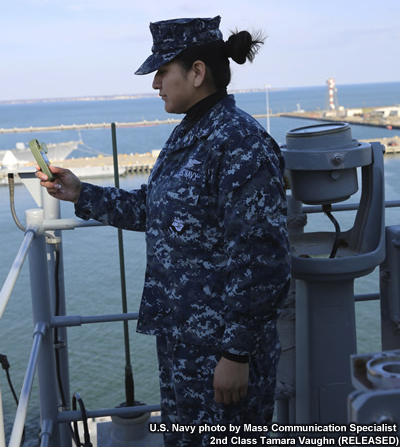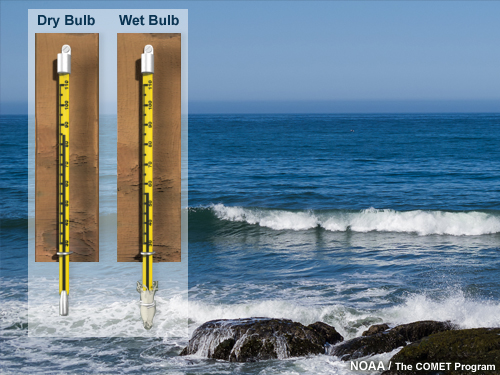Measuring Air and Sea Temperature
You can measure the air temperature using a handheld meteorological instrument.

At sea, important temperature observations include the dry bulb air temperature, wet bulb air temperature, and the sea water temperature. These temperatures are typically recorded and encoded as degrees Celsius (the international unit of measure). In the U.S., the values are converted to degrees Fahrenheit for distribution.
The dry bulb air temperature is the ambient air temperature, corresponding to the atmospheric temperature at a particular time and location. The wet bulb temperature is temperature indicated by a moistened thermometer bulb exposed to the air flow and indicates the temperature to which the air around the bulb is cooled at saturation. These temperatures can be used to compute the dewpoint, which relates directly to the humidity.

Air temperatures are typically measured using a handheld meteorological instrument (such as those in the Kestrel series). These instruments are small, battery-operated devices that record ambient air temperature, dewpoint, wet bulb temperature, and pressure.